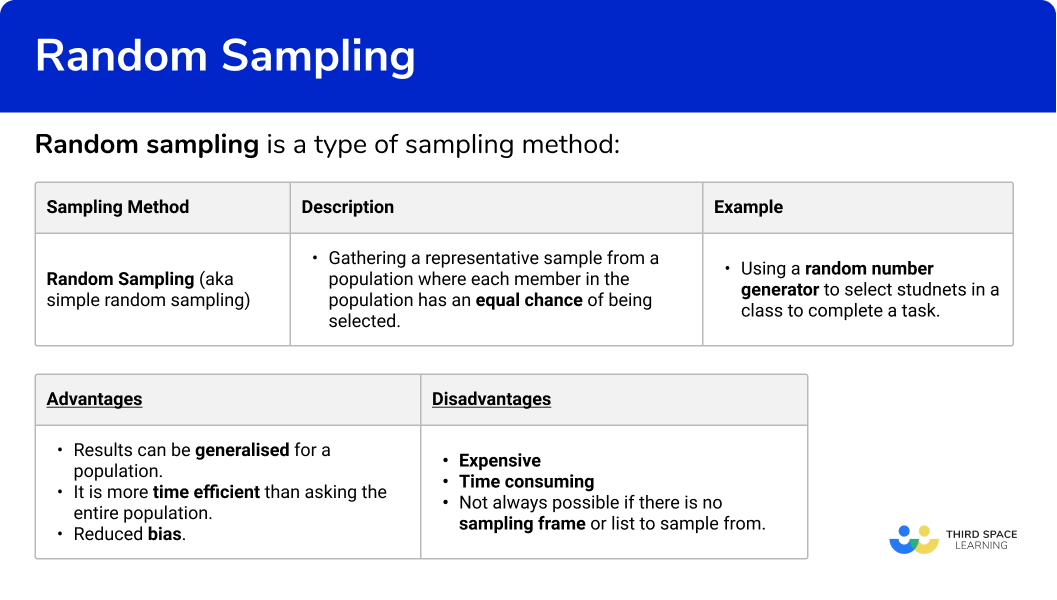
Important elements of dissertations such as research philosophy, research approach, research design, methods of data collection and data analysis are explained in this e-book in simple words. The e-book explains all stages of the research process starting from the selection of the research area to writing personal reflection. My e-book, The Ultimate Guide to Writing a Dissertation in Business Studies: a step by step approach contains a detailed, yet simple explanation of sampling methods. Difficulties in estimating sampling variability and identifying possible bias.Lower level of generalization of research findings compared to probability sampling.lack of representation of the entire population Unknown proportion of the entire population is not included in the sample group i.e.Effective when it is unfeasible or impractical to conduct probability samplingĭisadvantages of Non-Probability Sampling.Cost-effectiveness and time-effectiveness compared to probability sampling.Possibility to reflect the descriptive comments about the sample in the population is a higher priority that a strictly random sample, then it might be appropriate to choose samples nonrandomly.Researcher selects a sample or group and after data collection and analysis moves to another sample Initially chosen sample group members help researcher to find new members

Respondents voluntarily choose to participate in a study, usually through an online survey Researcher chooses population members that are conveniently available to her. Researcher chooses sample group members on the basis of their shared traits or characteristics Researcher chooses samples purely on the basis of her knowledge and credibility The following is the list of the most popular non-probability sampling methods and their brief descriptions: Non-probability sampling method Nevertheless, there are some considerations about the minimum sample sizes in non-probability sampling as illustrated in the table below: Nature of study

The issue of sample size in non-probability sampling is rather ambiguous and needs to reflect a wide range of research-specific factors in each case. Non-probability sampling is the most helpful for exploratory stages of studies such as a pilot survey.

Therefore, the majority of non-probability sampling techniques include an element of subjective judgement. In these cases, sample group members have to be selected on the basis of accessibility or personal judgment of the researcher. Necessity for non-probability sampling can be explained in a way that for some studies it is not feasible to draw a random probability-based sample of the population due to time and/or cost considerations. This is contrary to probability sampling, where each member of the population has a known, non-zero chance of being selected to participate in the study. In other words, this method is based on non-random selection criteria. The sampling fraction is then used as the constant difference between subjects.In non-probability sampling (also known as non-random sampling) not all members of the population have a chance to participate in the study. Then, they divide the total number of the population with the sample size to obtain the sampling fraction. Other researchers use a modified systematic random sampling technique wherein they first identify the needed sample size. Then the researcher picks his interval, 8.

The integer is typically selected so that the researcher obtains the correct sample sizeįor example, the researcher has a population total of 100 individuals and need 12 subjects. The researcher picks another integer which will serve as the constant difference between any two consecutive numbers in the progression. This integer will correspond to the first subject. The researcher selects an integer that must be less than the total number of individuals in the population. The process of obtaining the systematic sample is much like an arithmetic progression. The results are representative of the population unless certain characteristics of the population are repeated for every n'th individual, which is highly unlikely. The procedure involved in systematic random sampling is very easy and can be done manually. Then, the researcher will select each n'th subject from the list. In systematic random sampling, the researcher first randomly picks the first item or subject from the population.


 0 kommentar(er)
0 kommentar(er)
